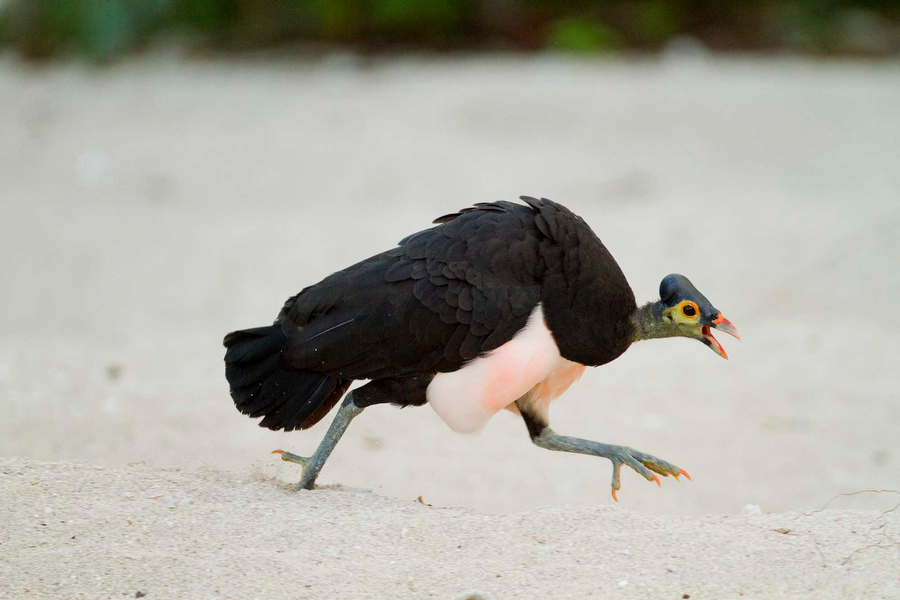- Home
- About Me
- Projects
- Documentaries
- National Geographic: Earth Live 2017
- BBC: Planet Earth II – Cities 2016
- BBC: Planet Earth II – Grasslands 2015
- Animal Planet: Mysterious Wilds of India 2015
- BBC: India – Nature`s Wonderland 2015
- BBC: Wonders of the Monsoon 2014
- National Geographic: Urban Jungle– Downtown 2013
- Animal Planet: Return of the Clouded Leopards 2011
- National Geographic: Secrets of Wild India 2011
- National Geographic: The Secrets of the King Cobra 2009
- BBC: Natural World- Mountains of the Monsoon 2008
- Discovery Channel: Sahyadris – Mountains Of The Monsoon 2002
- Short Documentaries
- Books
- Documentaries
- AWARDS
- NEWS
- Blog
- Contact Me
- Store
Blog
Exactly a year ago I spent my time in a remote little mountain range in the Tompotikan peninsula of Sulawesi. Had a great time working with top National Geographic contributor/ ILCP Fellow Kevin Schafer and Indonesia’s top photographer Riza Marlon. Our job was to help Marcy summers of the Alliance for Tompotika Conservation document the biodiversity of the fragile peninsula and bring about some serious convservation before the region gets converted to oil palm and the like.
Here’s a brief link to National Geographic’s Newswatch that explains more about the expedition supported by iLCP’s Tripods in the Mud.
Here’s a short video of the whole expedition edited by Pooja Gupta, pancreatitis a student of Srishti School of Design.
Expedition Tompotika – Sulawesi from Sandesh Kadur on Vimeo.

ENDANGERED
Maleo Macrocephalon maleo
The Maleo is a very cool looking ground nesting bird with a distinctive, bare, bump on its head. We spent time in a hide near one of the nesting beaches that this bird inhabits. Highly endangered the Maleo is endemic to Sulawesi and nearby islands. It lays its eggs in the sand and allows it to be incubated by solar and in some places geothermal radiation. It was great fun watching this turkey-like bird defend its patch from rivals uttering a guttural, gurgle-like call while chasing away intruders.
“An interesting story was told in former days in Indonesia about the species Tropidolaemus wagleri It was regarded as a good-natured and laconic animal, which could be seized, at least during daytime, and with which one could play without being bitten. On Sumatra one would even place it in the palm trees on the outer veranda of the house, where it would stay motionless in the same place, sometimes for a month. It would bring good luck to the tenant and children would even wear it as a necklace! Because of its kind-heartedness it was known as “Ular Cinta Manis”, the loveable, sweet snake.People believed that birds came to pay tribute and bring food for the holy snake. Other people believed that, because of its almost invisible daily activity, it would live on air” (Delsman, 1951)
At the end of the day what we do is help build awareness in places where although high in species and biodiversity, the local people would have little knowledge, access, or appreciation of what lives around them. Perhaps if we could get more people to ‘see’ whats around them, they would appreciate, value and thereby ‘want’ to protect what’s left.
For more information and to support the work of The Alliance for Tompotika Conservation / Aliansi Konservasi Tompotika (AlTo) visit their website: www.tompotika.org
Related Posts
Located on the banks of the mighty Brahmaputra and home to the largest...
It was the end of June. Bangalore had been shockingly dry with...
6 Comments for Expedition Tompotika – Sulawesi,Indonesia November 2011
November 20, 2012, 7:27 am
Hi Sandesh,
Great work thanks for sharing the incredible joys of your trip. Looking forward to learn a lot more from your trips. Great team.
November 20, 2012, 8:29 am
Hi,
I liked your photos and the content of the video. I feel that the video could’ve been edited better.
A question for you : how do you carry such huge equipments in dense forest?
Regards,
Viswas
November 20, 2012, 7:02 pm
Hi Viswas,
Thanks for your comments. The video/edit was done as a bit of a side thing and after a few permutations, we decided to go with this one – a longer version, which will then be cut down further, maybe even to 3 minutes. It wasn’t an easy job for the editor as I hadn’t shot full sequences and just grabbed what I could on the go. So Pooja did have a challenge and did well cutting it down to ten minutes. Next step – cutting it down to a two or three minute piece.
Equipment: always a fine balance. Sometimes you can carry equipment when you know there’s a vehicle that will serve as base and transport, but in this case you had to walk everywhere, so downsizing is the key. Even then, you will have a ton to carry. There’s no way around it. On expeditions like this one, it would be impossible to do without additional manpower.


 6
6












